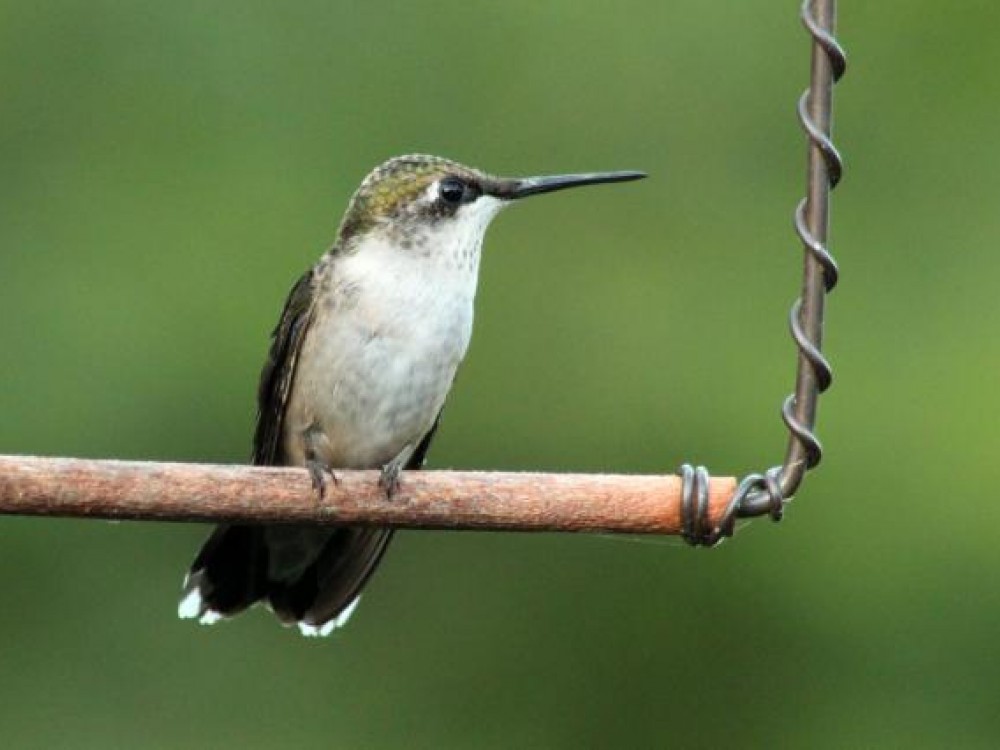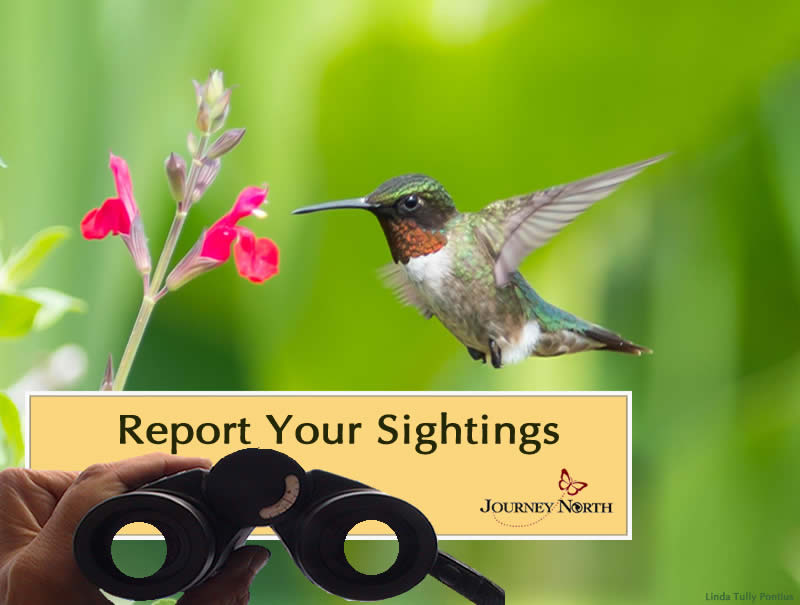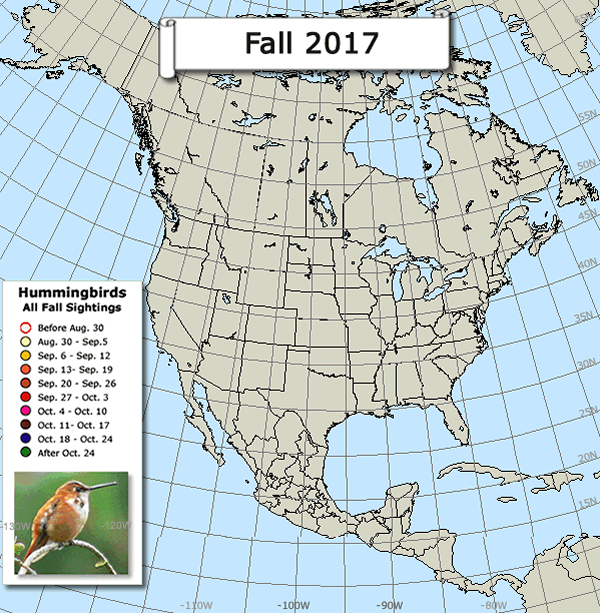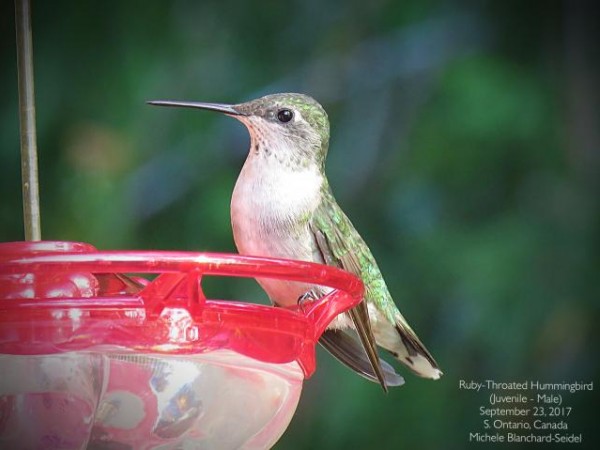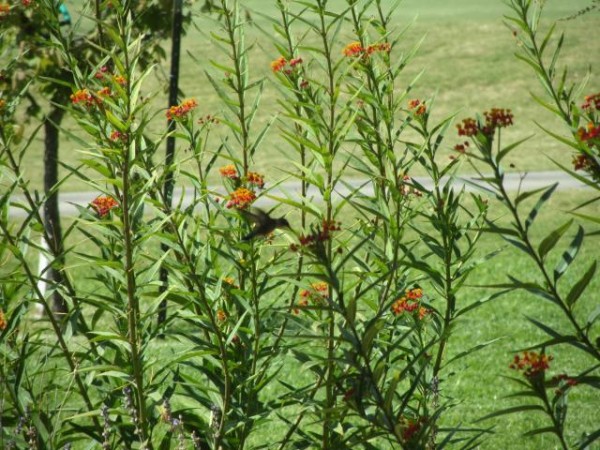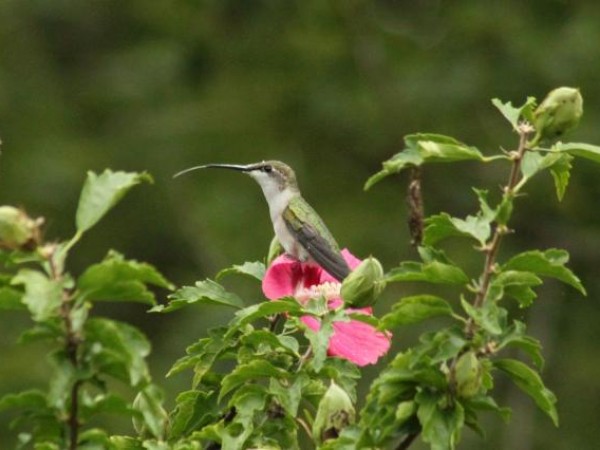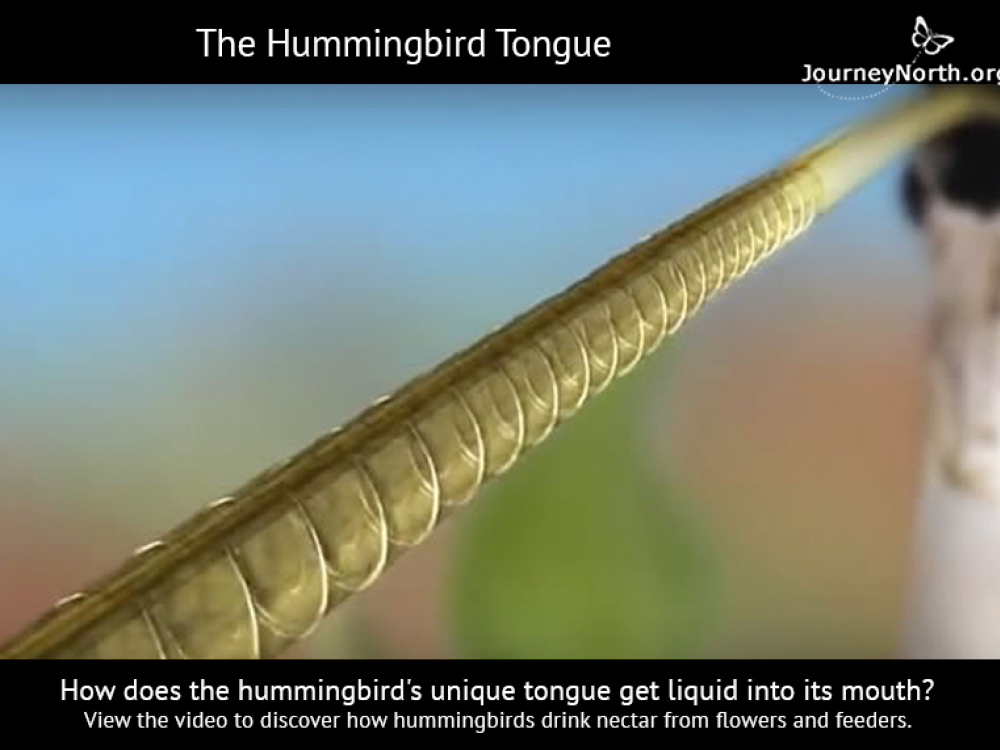Warm Fall, Slow Migration?
The first official week of fall brought warm temperatures to many places along the migration trail and observers enjoyed lingering hummingbirds.
Passing Through
This week observers reported unseasonably warm temperatures, fading flowers, and migrating hummers briefly stopping by flowers and feeders to refuel before moving on. In places where sightings are diminishing, people were on the lookout for stragglers.
Oakdale, Minnesota
"Observed 5 female or juvenile ruby-throated hummingbirds this evening. Very warm today with high of 94°F."
- Mike, September 22, 2017Newburgh, Indiana
"I was surprised to see an adult male at the feeders tonight. He must be passing through as I haven't seen one in awhile."
- Amy, September 21, 2017Monticello, Indiana
"At least one still feeding from feeder. VERY HOT this week. Over 90°F. I expect them to be here two more weeks if history holds true."
- Robin, September 24, 2017
When do hummingbirds typically leave from your area each year? Are this year's visitors leaving when they normally do? earlier? later?
Nectar — and Protein
In addition to nectar, hummers need protein.
"The hummingbird in this photo was really trying hard to get all the gnats that were flying around," wrote Denise Salvatore from New York.
Hummingbirds will eat most any soft-bodied bugs they can swallow whole: fruit flies, gnats, aphids, and tiny spiders, plus their eggs and larvae. If you have an insecticide-free lawn and garden, you’ll be helping hummers find bugs for protein.

